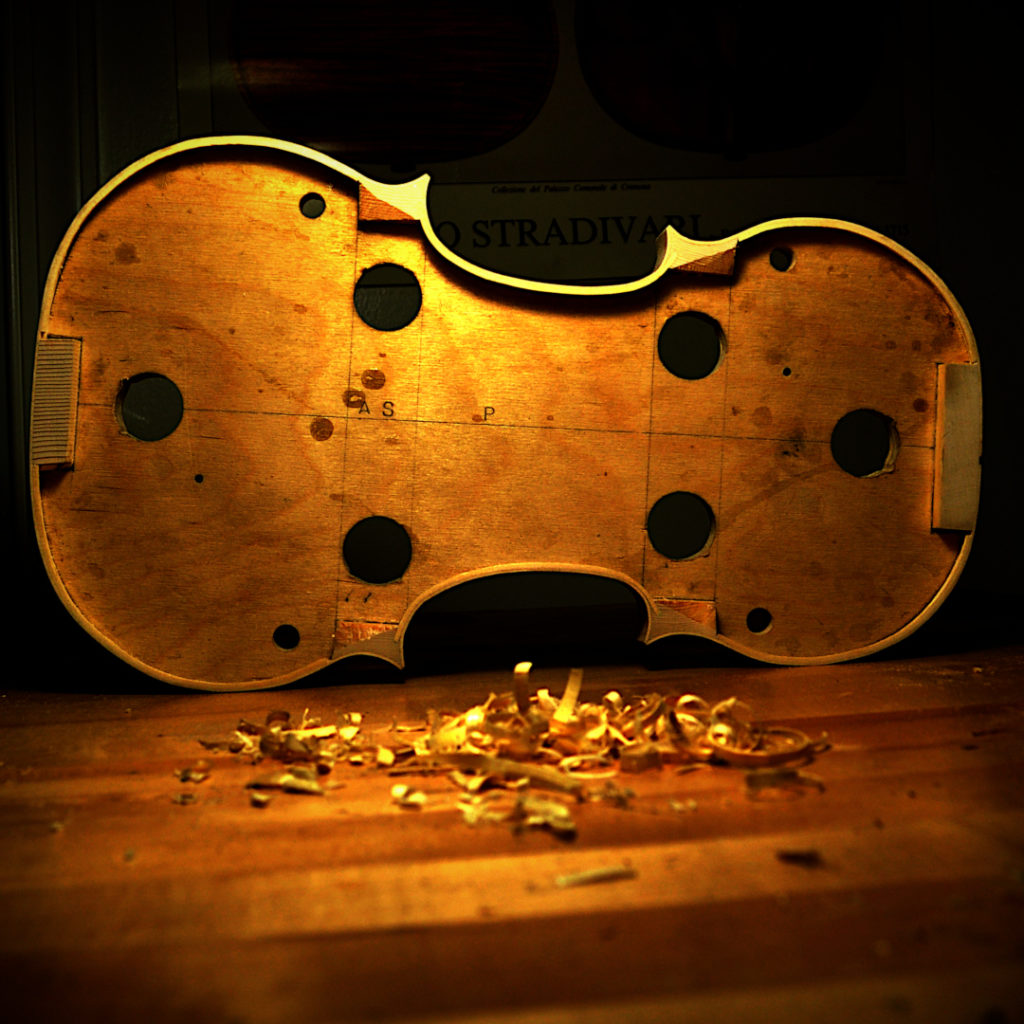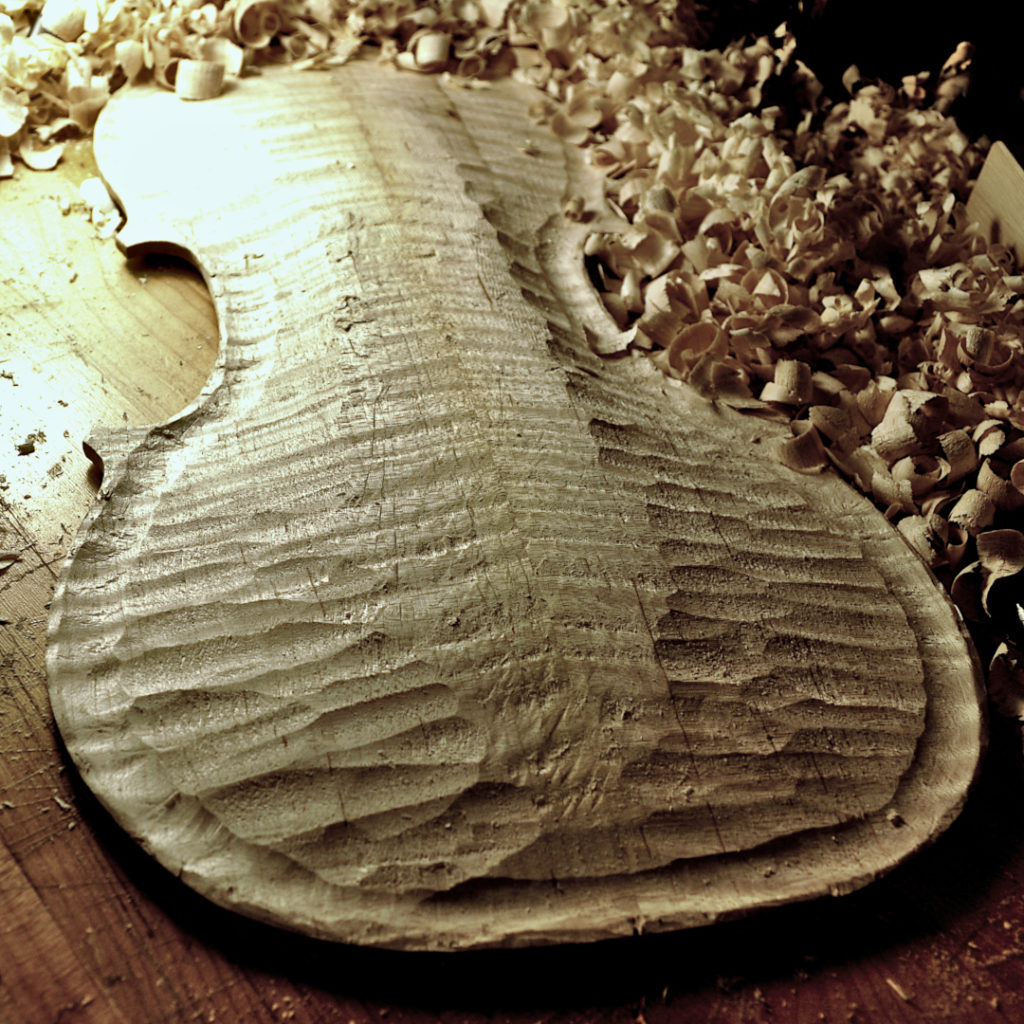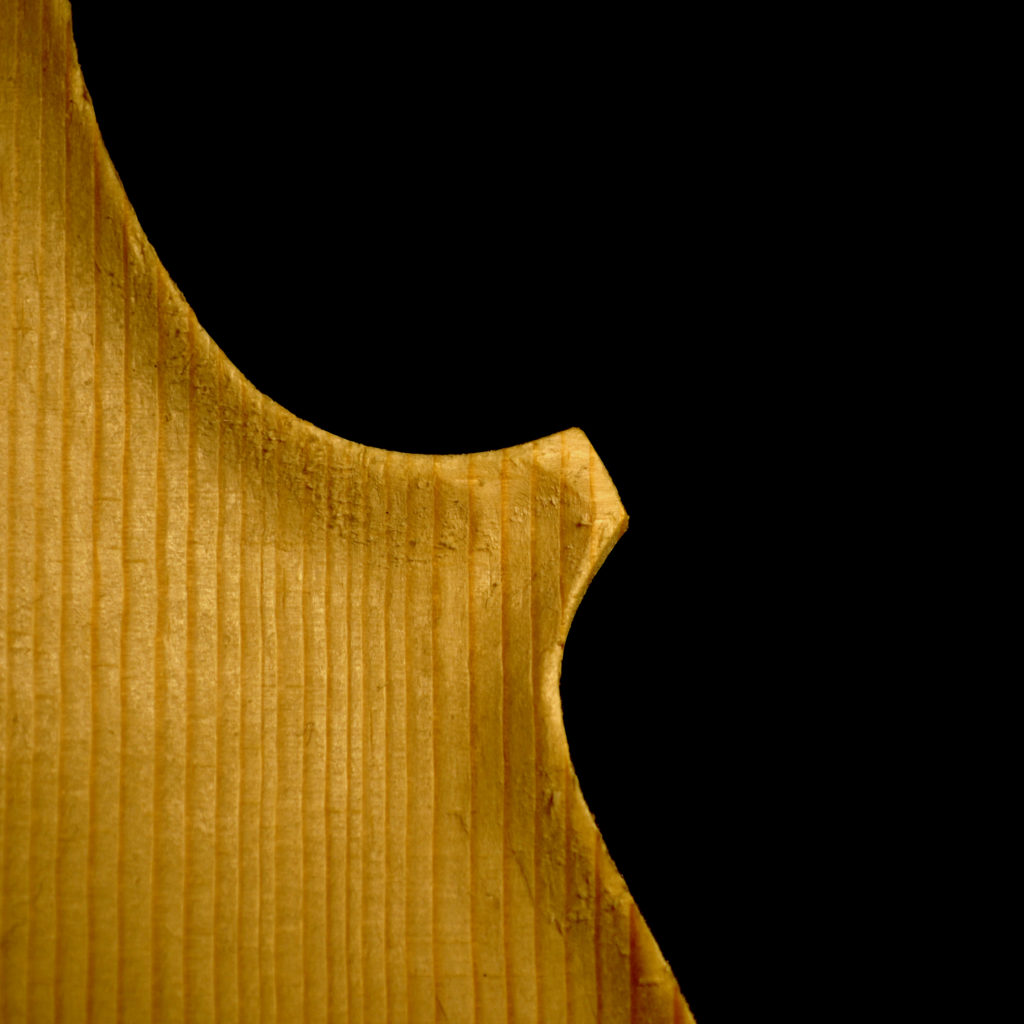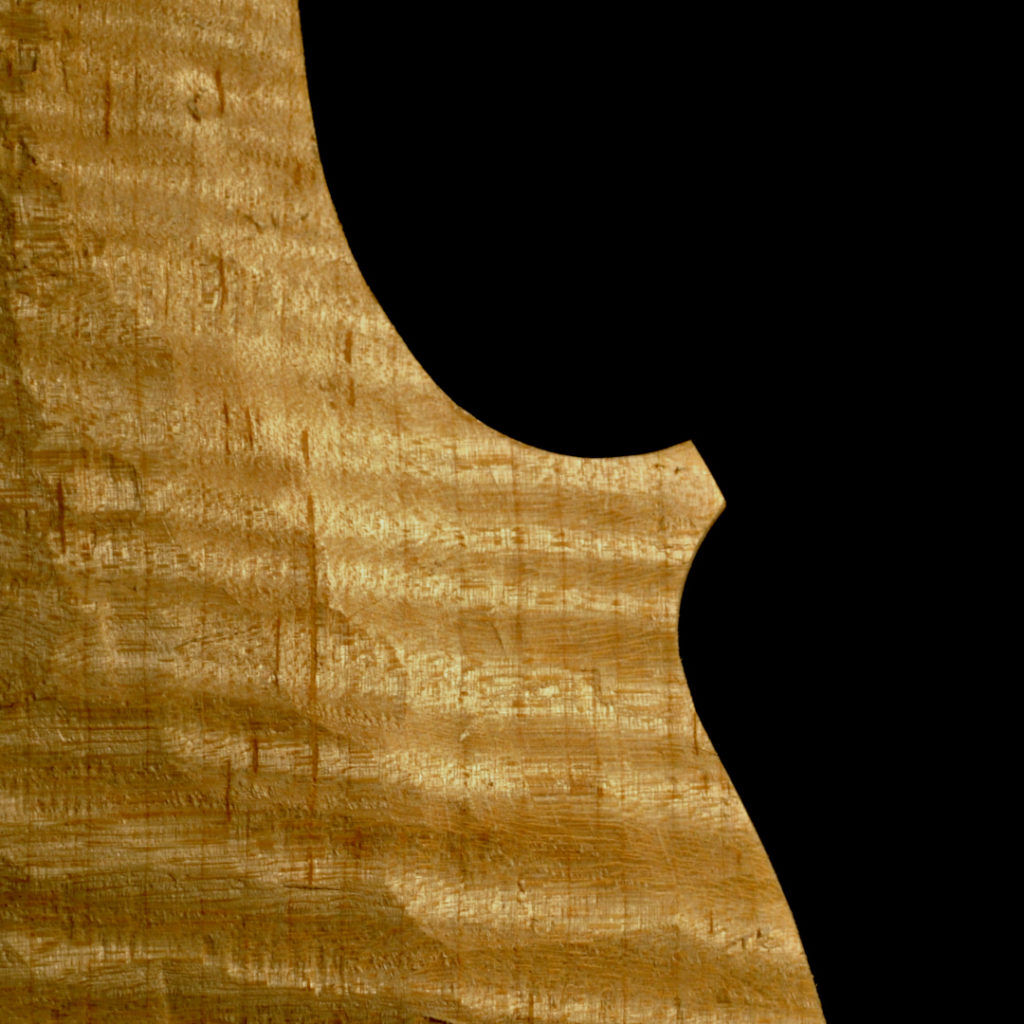Violin makers are obsessed with corners. Those are the pointy bits at the end of the c-bouts that you’ve probably never given a second (or first?) thought to. It’s very easy for the fetishization of tiny details to turn into hipster snobbery, and there is plenty of that in the violin world. But allow me to give three reasons to care about corners anyway.
First, small, seemingly insignificant, features are often key to establishing the overall aesthetic of an instrument. The corners help give the eye context as it takes in the instrument’s outline, and convey much of its character and style; especially since the lines of the purfling highlight their shape.
Second, while the overall shape of the violin may seem arbitrary, it actually has a strong internal logic. At the corners, however, the dictates of that logic tend to be weaker. You could therefore see the corners as space for “creative expression”. But, to me, it actually means that you have to think extra carefully about their shape and how they relate to the rest of the instrument.
Third, obsession is sometimes a useful tool in craft. Even if I don’t care about the corners themselves, picking them out as important focuses my attention in a specific way that helps get the outline as whole just right. A masters of a craft will sometimes give explanations for how or why they do something that, to say an engineer or physicist, does not correspond with reality and yet precisely captures the understanding needed to coordinate the hand, mind, and eye to produce the desired result.
All of which is to say, that—as a violin maker—I think it’s worth my time to endlessly contemplate the infinite mysteries of corners, but you…you shouldn’t feel any obligation give them a second (or first?) glance.
But also, corners, because they stick out, experience a lot of wear. On older instruments they are rarely pristine. In fact, full corners look very odd to some people. Even Strad made corner-less violin once! So while I appreciate a perfect corner, I also try to maintain a bit of perspective. Social media tends to be full of perfect photos of beautifully finished work. I find myself, on other hand, tending to share my messy work-in-progress. Even though it’s not always as flattering, I think it’s often more interesting. I guess that’s why I’m a violin maker and not an online brand influencer person.
But more than that, I’d like to break the mystique of violin making a little. I don’t think we should pretend that what we do is more special than it is. Musicians will respect us without appeals to secret ancient knowledge. My ego will be fine without claims of super human precision. I work with my hands based on principles of sound craft, and I think that’s pretty cool on its own. Yes, making a violin is highly skilled work, but it’s not magic. I would rather keep the door to my workshop (metaphorically) open than find myself hiding behind a veneer of prestige.
In that spirit, I have a confession to make about rib structures: they aren’t my favorite…and that’s ok.

Building a violin takes a range of skills. I realize that sounds strange because it all looks like woodworking. But, bending, carving, shaping, fitting, set-up, and varnishing all require different strengths and mindsets. The diversity, and the challenge of bringing it all together, is a big part of what I love about making violins—even if I don’t enjoy each individual step equally.
Not enjoying your job is, unfortunately, common. There is this notion, however, that jobs of passion are categorically different. It’s not true. Even though I love making violins, there are always ups and downs. But, more than that, it misunderstands the nature of work.
I prefer to see making violins, not as an expression of who I am, but as a contribution I make to music, my community, and the world.
Under capitalism, there is no such thing as a pure work of passion. The economic realities necessarily change how we work and our relation to that work. (Just ask a school teacher!) I don’t just mean that it introduces the need to find balance between speed, quality, and price in an effort to triangulate value. To a certain extent that’s always present in craft. But, because in capitalism that value is determined by a necessarily antagonistic relationship between makers, dealers, and players.
More perniciously, this myth is used as a foil to justify the misery of “regular” jobs. By setting apart a small number of “special” jobs the everyday toil of the rest is framed as just the way it is. The hidden assumption here is that our jobs are fundamental to our identity, especially since most of us rent our very selves out by the hour. In this worldview work becomes utterly fulfilling or utter drudgery, and if it’s the latter it’s your fault and not that of the job itself!
But work doesn’t have to be your very identity or the expression of your self worth as a human. I prefer to see making violins, not as an expression of who I am, but as a contribution I make to music, my community, and the world. For me, that radically changes how understand the ups and downs of my work…and lets me enjoy it even more!


